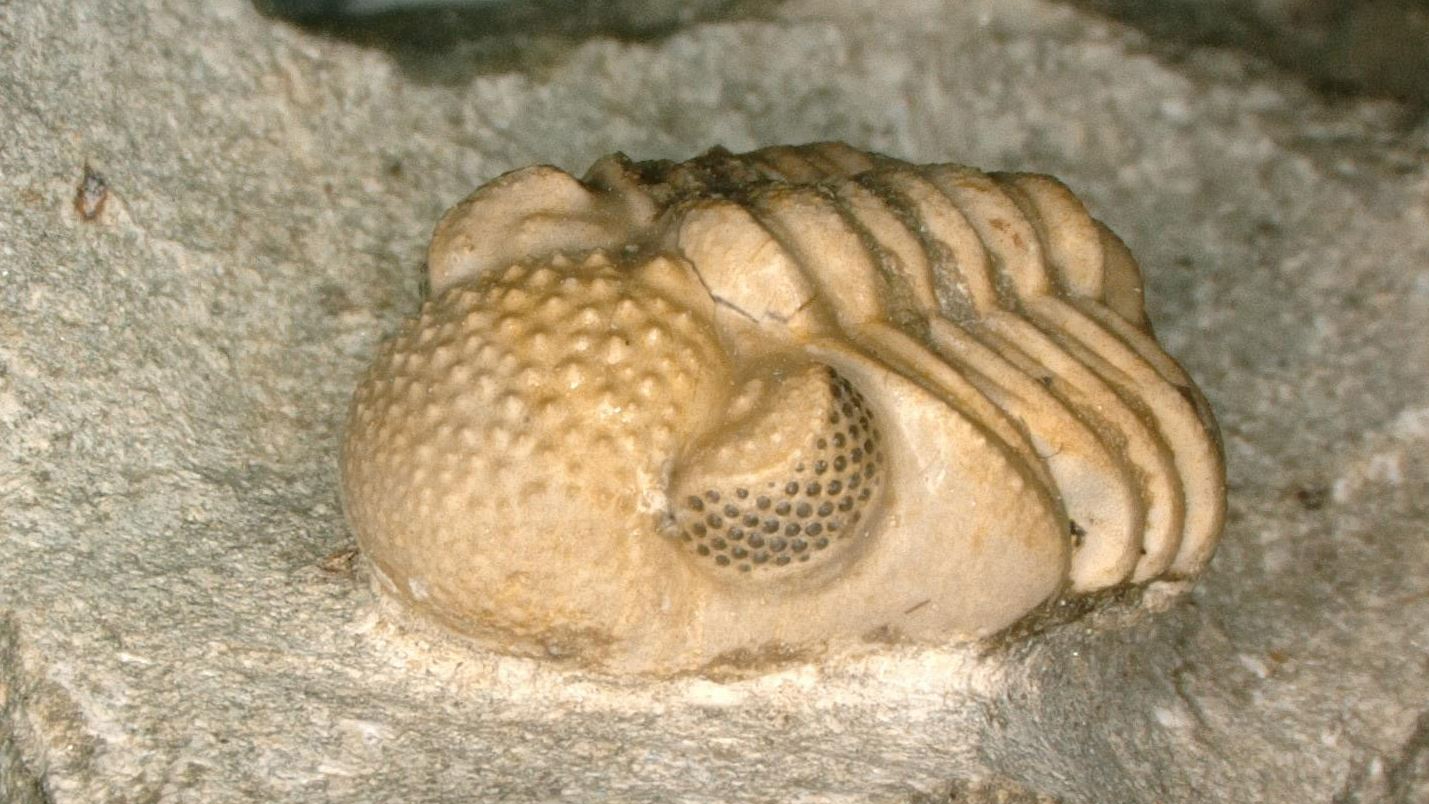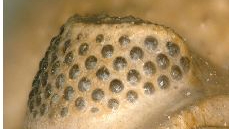This trilobite was equipped with a 'hyper-eye' never seen before in the animal kingdom
After 50 years, this amazing structure is confirmed.
The humble trilobite, a helmet-headed creature that swam the seas hundreds of millions of years ago, was hiding an extraordinary secret — a "hyper-eye" never seen before in the animal kingdom.
By poring over X-ray images, researchers found that certain species of trilobite — extinct arthropods distantly related to horseshoe crabs — had "hyper compound eyes," complete with hundreds of lenses, their own neural network to process and send signals and multiple optic nerves, according to new research published Sept. 30 in the journal Scientific Reports.
Related: Why did trilobites go extinct?
Today's arthropods, like dragonflies and mantis shrimp, are also known for their powerful compound eyes, which are composed of myriad eye facets called ommatidia, each equipped with its own lens, like a disco ball.
But, according to the new findings, trilobites from the family Phacops had compound eyes that were far larger and more complex than their modern-day arthropod relatives. Each of their eyes (they had one on the left and one on the right) held hundreds of lenses. At nearly a millimeter across, these primary lenses were thousands of times larger than a typical arthropod's. Nestled beneath them like bulbs in a car headlight sat six (or more) faceted substructures akin to a typical compound eye. "So each of the big Phacopid eyes is a hyper compound eye with up to 200 compound eyes each," study lead author Brigitte Schoenemann, a paleontologist at the University of Cologne in Germany, told Live Science in an email.
Trilobites are creatures that lived from the early Cambrian period (521 million years ago) to the end of the Permian (252 million years ago) on ocean floors. Some may have been predators that hunted aquatic worms, though most were scavengers or plankton eaters. The remains are commonly found in limestone rock from the Cambrian period. But despite their ubiquity in the fossil record, scientists still have questions about their physiology and evolutionary history .
To answer some of those questions, the researchers used photo-enhancing techniques to examine dozens of archival photos, cross referencing them with recent findings. In the process, they also resolved a long-standing scientific debate: They confirmed that a mysterious series of "fibers" seen in X-ray images from more than 40 years ago were actually bundled optic nerves connected to the trilobites' eyes.
Get the world’s most fascinating discoveries delivered straight to your inbox.
"Inferring function in ancient, extinct organisms is always difficult," said Nigel Hughes, a trilobite expert at the University of California Riverside, who was not involved in the study. In fact, Hughes pointed out, even some oddball features on living creatures elude explanation — for example, there is still some debate about the function of narwhals' long, horn-like tooth, according to the Smithsonian Institution.
However, eyes are a bit easier to parse than teeth or horns, Hughes said, because optical systems have only one function: sight. "We know it's an eye from the structure," he said, and therefore it makes sense for the attached filaments to be nerves. "I think that that's pretty convincingly argued in the paper." Why a trilobite might need that much visual power remains a mystery.
The X-ray photos themselves were taken by Wilhelm Stürmer, a professional radiologist and amateur paleontologist from Siemens. In the 1970s, Stürmer mounted an X-ray probe inside his VW bus and created a novel method to study fossils: X-ray paleontology, which allowed him to peer through solid rock on site and take some of the most sophisticated fossil photos of his day.
Upon examining the Hunsrück Slate, a fossil quarry driving distance from his home in Munich, Germany, Stürmer uncovered a world of petrified creatures embedded in the rock. Remarkably, these specimens — including phacopid trilobites — were so well preserved that even their delicate soft tissues were visible. Stürmer and his collaborator Jan Bergström noted that the trilobites appeared to have fossilized "fibers" connected to their compound eyes, which they described in the June 1973 issue of the journal Paläontologische Zeitschrift.
Related: In images: A filter-feeding Cambrian creature
But when Stürmer brought these findings before other paleontologists, "his colleagues in the scientific world laughed at him," Schoenemann said. The prevailing wisdom at the time was that soft tissue, like nerves, simply did not fossilize. Stürmer must have mistaken gill filaments for optic nerve tissue, his critics argued, according to Schoenemann. The radiologist, however, remained firm in his convictions.
"Stürmer believed his theory until he died, filled with bitterness in 1986," Schoenemann said. After nearly half a century, Schoenemann and her team feel they have finally vindicated his work.
Sadly, like Wilhelm Stürmer, phacopid trilobites are no longer with us — they went extinct about 358 million years ago at the end of the Devonian period, along with about 75% percent of all life on Earth, Schoenemann said. "But surely not because of their sophisticated, highly adapted eyes."
Originally published on Live Science.

Joanna Thompson is a science journalist and runner based in New York. She holds a B.S. in Zoology and a B.A. in Creative Writing from North Carolina State University, as well as a Master's in Science Journalism from NYU's Science, Health and Environmental Reporting Program. Find more of her work in Scientific American, The Daily Beast, Atlas Obscura or Audubon Magazine.


